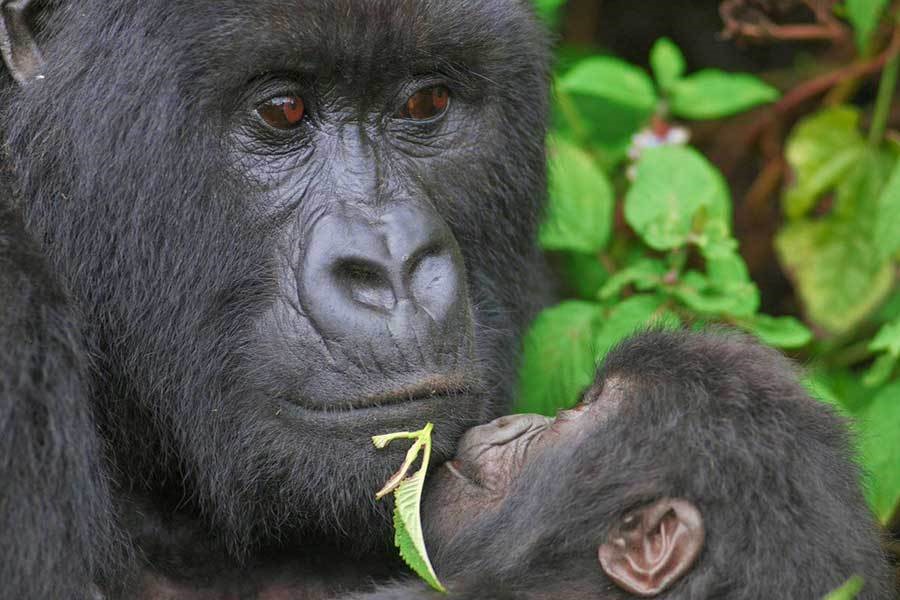Mountain Gorillas No-longer Listed as Critically Endangered
- Mountain Gorillas No-longer Listed as Critically Endangered

The Mountain Gorillas do not live or survive in captivity and are only found in three countries i.e. Uganda, Rwanda and D.R. Congo – Africa. In 2012, their numbers were about 800 (according to census data released by Uganda Wildlife Authority) and half of those were found in Bwindi impenetrable forest. The gentle giants were considered to be critically endangered in 2008 however due to conservation efforts, their numbers have been increasing. Currently (2018) – the mountain gorillas are no longer listed on the IUCN red list as critically endangered. The growth of these creatures has been caused by intensive conservation which includes anti-poaching patrols and veterinary interventions.
The 2008 Mountain Gorilla population was estimated to be around 680 individuals, but 2018 estimates show that it has increased to over 1,000 individuals, the highest figure ever recorded for the subspecies. The population growth has been confirmed through coordinated and improved survey methods.
Although the good news that they are increasing in number, the Gorilla Beringei are still endangered and conservation efforts must continue according to Dr. Liz Williamson who is part of the IUCN SSC Primate Specialist Group. She also adds that, “Coordinated efforts through a regional action plan and fully implementing IUCN Best Practice guidelines for great ape tourism and disease prevention, which recommend limiting numbers of tourists and preventing any close contact with humans, are critical to ensuring a future for the Mountain Gorilla.”

The Mountain gorillas not being critically endangered brings hope and still encourages more conservation from the communities living nearby the gorilla habitats. The mountain gorillas are a subspecies called Gorilla Beringei and found in Virunga, Bwindi forest and Mgahinga gorilla parks. The other subspecies found in zoos are from the lowlands of western Africa.
Threats to this subspecies remain high, including poaching, recurring civil unrest and human-introduced diseases.


